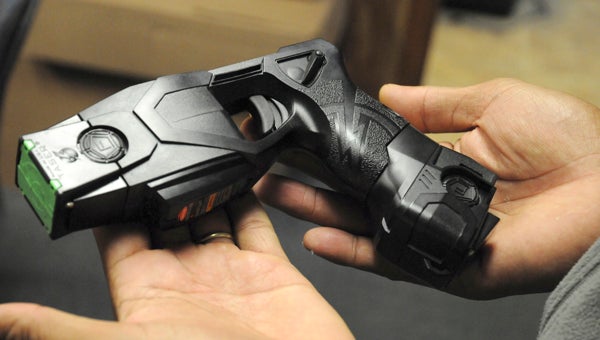Selma Police use Tasers 10 times this year
Published 10:55 pm Tuesday, December 23, 2014

Selma Police Department officers used their Tasers 10 times since they were purchased in early 2014.
It’s been almost a year since the Selma Police Department added stun guns to its arsenal, and officers say they have had a positive impact.
Selma officers have used their Taser X26 weapons 10 times since they received them in early 2014, according to the Selma Police Department’s Sgt. Jeffrey Hardy.
“When people actually see the officers using those Tasers, and they see the effect that it has on people, normally the word gets around, and we don’t have to use them as much,” Hardy said. “Because once you give a warning and say you have the Taser, they normally just give up.”
Taser X26 fires two small probes that are attached to insulated conductive wires. Energy transfers over the wires into the probes, which can penetrate clothing.
The charge lasts for five seconds with each pull of its trigger, Hardy said.
Each Taser carries about 150,000 volts.
“You deploy one of these Tasers in a Brahman bull, it will knock him down, and you will be able to run around it two or three times before it gets back up,” Hardy said. “It’s very, very strong.”
The Selma City Council agreed to purchase 27 stun guns at a cost of about $36,000 in December 2013 with a unanimous vote. In September 2014, they approved the purchase of an additional 26 stun guns at about the same price, according to a previous Times-Journal article.
Funded by the city’s half-cent sales tax fund with each purchase, the stun guns were requested by the Selma Police Department.
Selma Chief William Riley said the department needed more options to handle life-threatening situation, such as the officer-related shooting that occurred in December 2013. Ananias Shaw was shot and killed by an officer after lunging at officers while wielding a hatchet.
The incident propelled the department to ask for the nonlethal equipment, according to Riley.
The other nonlethal weapons include batons, rubber pellets, flash bangs and more.
Officials have to be trained once a year to use the Tasers, which includes the trainee being shocked at least once.





